Oaxaca 2015: Day 2 – Santa Ana del Rio
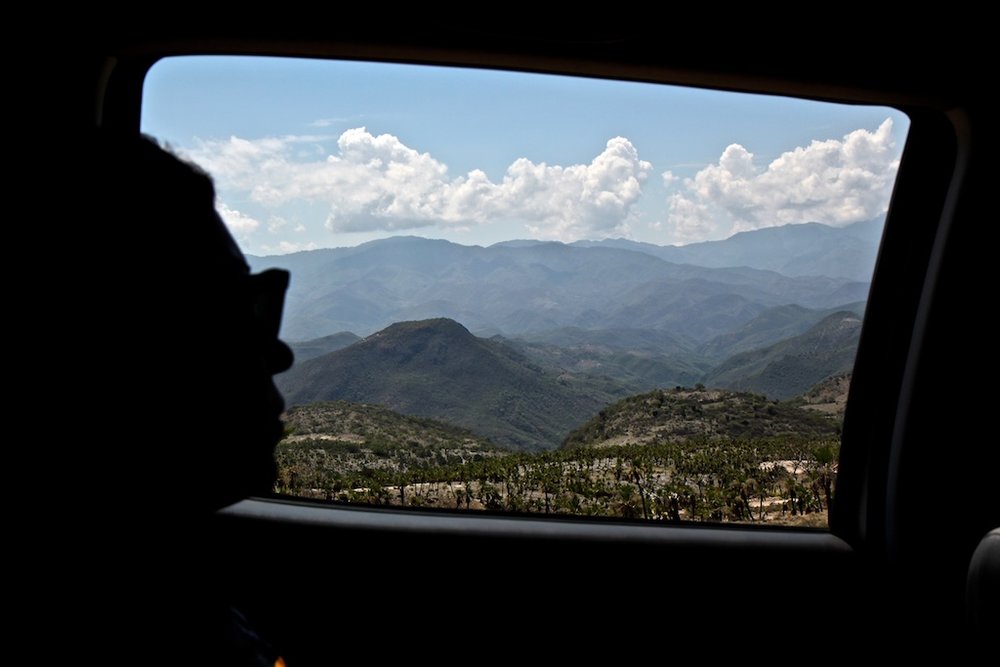
Today was a very long, but incredibly rewarding day. I got up around seven in the morning and had my street tacos before meeting the rest of the Danzantes gang over at the main office. We crammed into two large vehicles and prepared ourselves for the long drive to Santa Ana del Rio—one of the villages featured in the Alipus mezcal collection. They said it was going to take a while to get there; and it did. But there was plenty to see along the way.
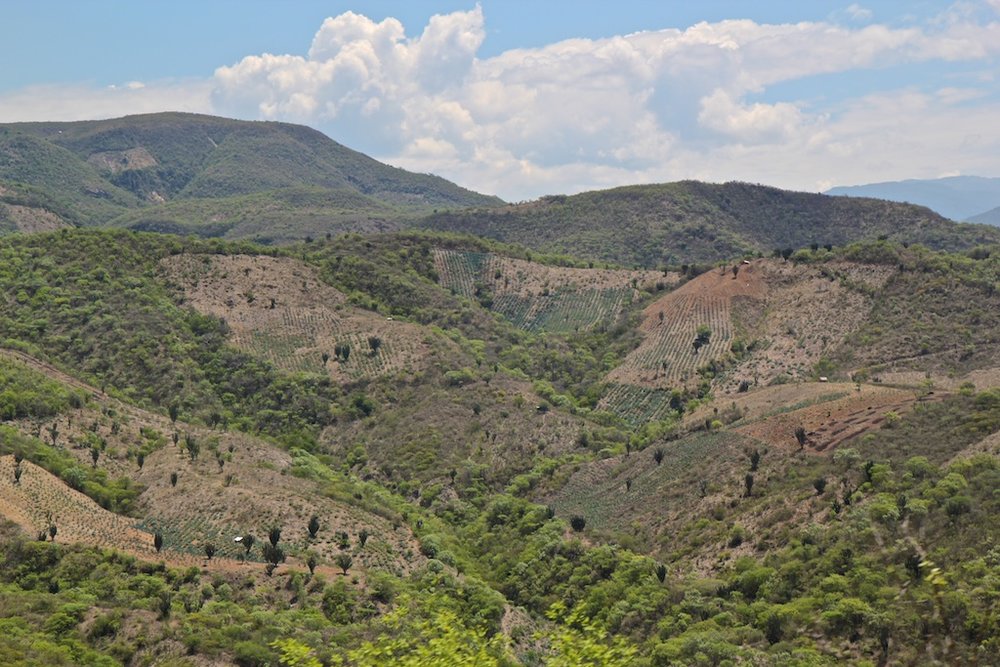
Santa Ana is about three hours south of Oaxaca City and is situated deep within the mountains surrounding the valley. By the time you reach the turnoff that says "Santa Ana - 26", you think to yourself: "Oh, we're only twenty six miles from Santa Ana!" But you're really still a good hour's drive from the village. Those twenty six miles are pure dirt and gravel with everyone in the car bracing themselves for the next big dip in the road. Snapping photos through the window is possible, but every third photo ends up being a jittery shot of the handle over the window because your lens ends up getting tossed upward from the turbulance. Can you spot the cultivated agave fields adorning the steep mountains slopes?
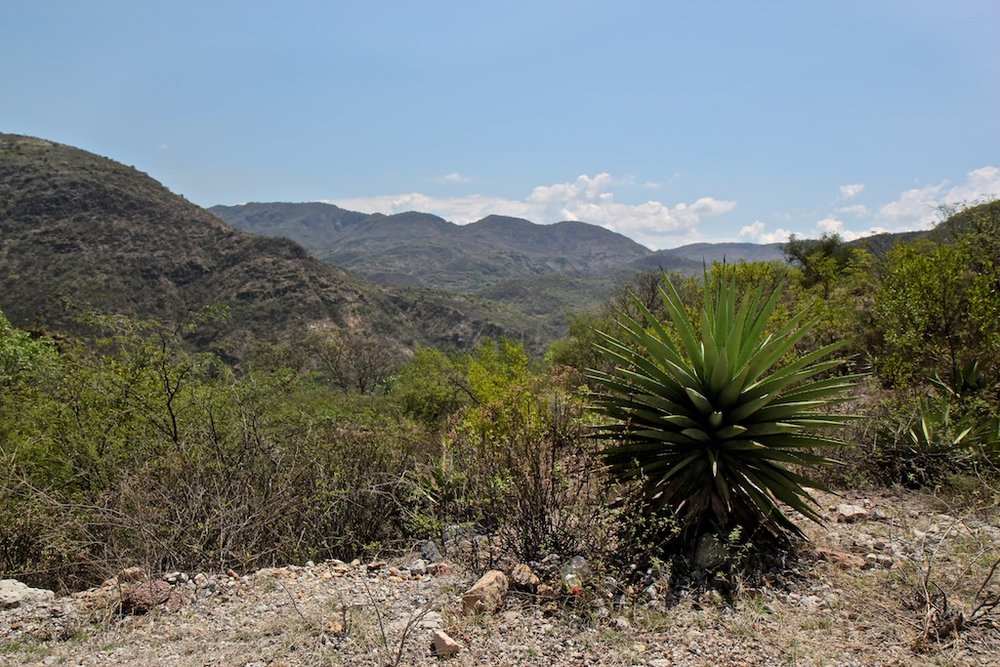
In a way, visiting the mountains of Oaxaca is just like visiting the mountains around the Napa Valley—it's a bunch of wilderness with a few crops growing sporadically along specifically-chosen hillsides. Of all the various spirits, mezcal is really the most like wine. There are so many similarities. In between the rows of Espadin, you'll come across the occasional wild agave growing amidst the pack. We saw various examples of Tobalá, Tepextate, and Madrecuixe along the way.
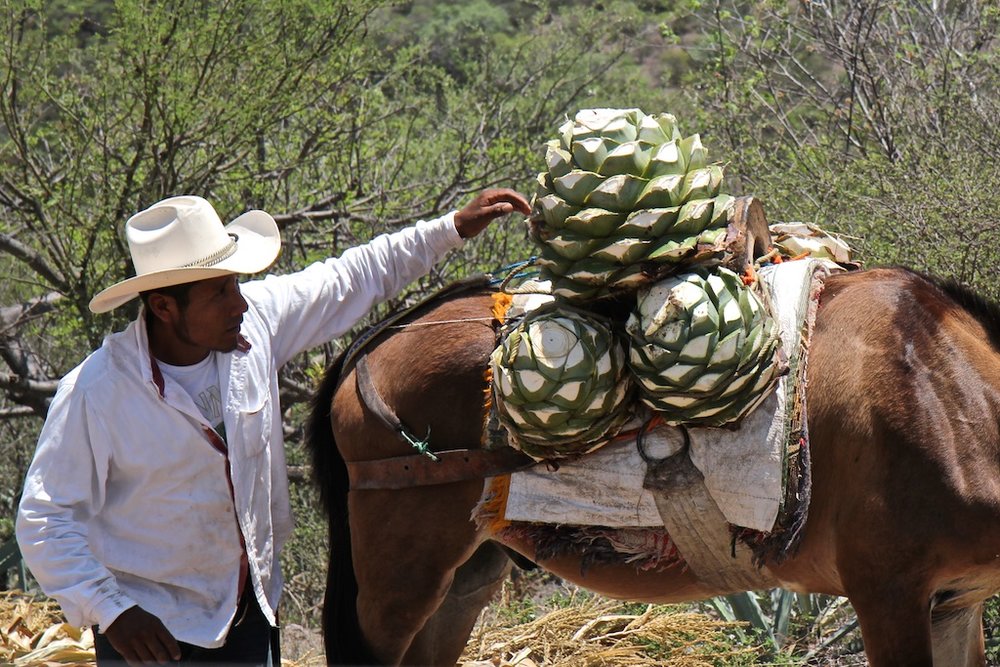
We also passed a lone cortador harvesting some agave and using his burro to carry the load. Oaxacans don't use the term jimador like the tequila producers in Jalisco do to refer to their agave harvesters.
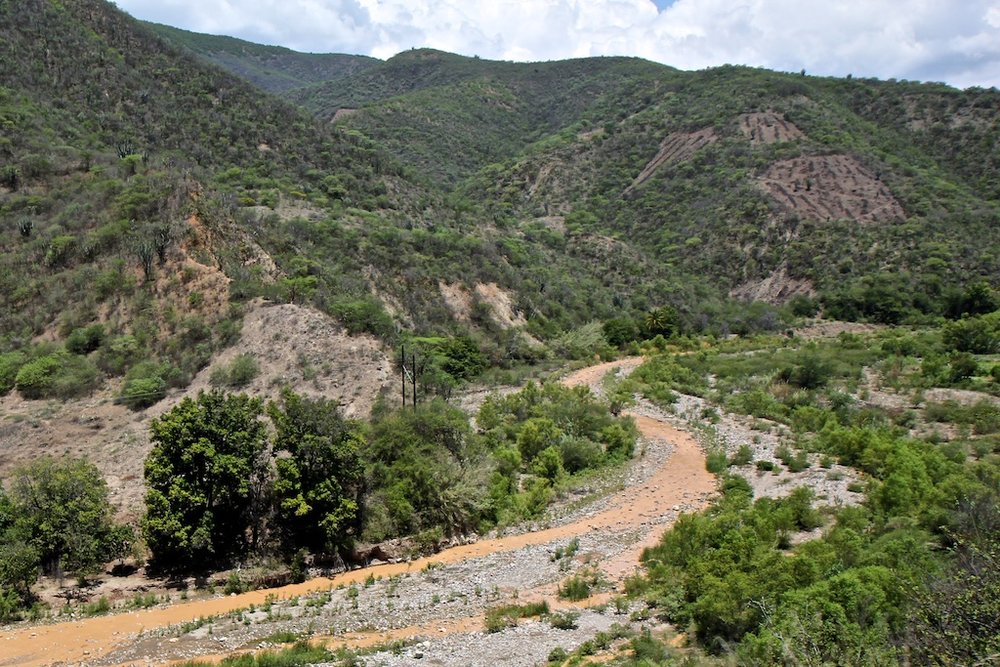
After a good hour of bumping and grinding you finally come to the river, or the rio in the name Santa Ana del Rio. It's the same river that passes by other fairly well-known mezcal-producing pueblos like San Juan del Rio and San Luis del Rio (also villages featured in the Alipús portfolio). It flows somewhat red like the earth underneath it and splits the village from the distillery itself. You have to actually drive (or walk) across the river to reach the mezcal-producing area.
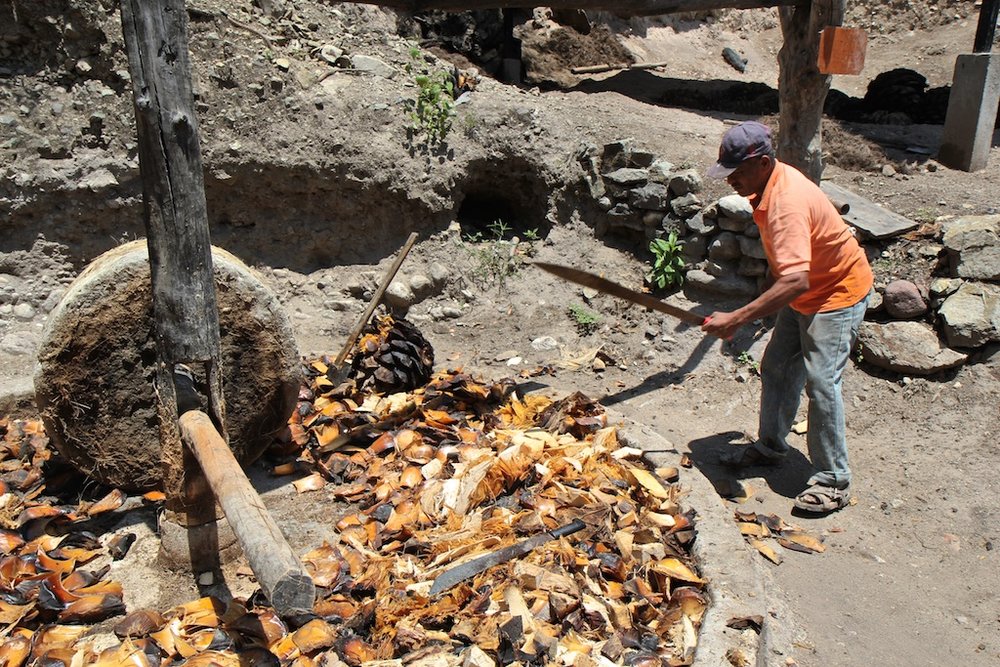
And suddenly you can smell the roasted agave in the air. You pull into the stony driveway and there in front of you is the agave pit and the huge tahona used to mash the piñas into a mass of fermentable pulp. You just need to give each agave a few whacks with a machete first. Then you're in business.
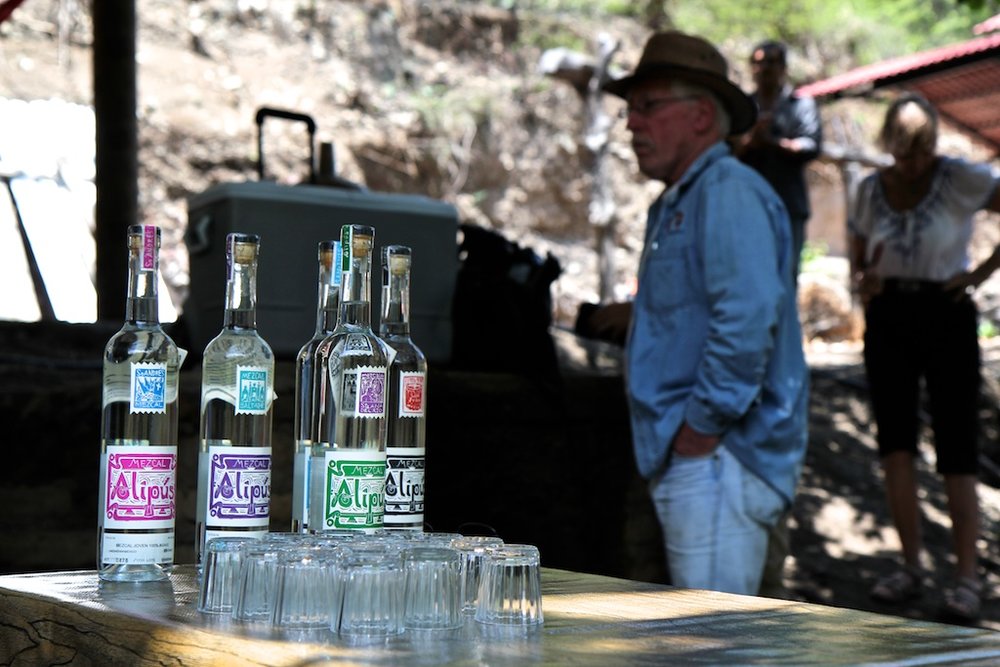
So what is the Alipús label and what does it represent in the world of mezcal? Alipús is a series made from contracted mezcales, purchased and marketed by the Danzantes group in Oaxaca, and imported into California by Craft Distillers. Each label corresponds to a specific village where the producer is located. All of them are made entirely from Espadin agave (with the exception of the San Andres that has a smidge of something else thrown in during fermentation). The point is to show the geographical differences that terroir, fermentation, and water ultimately play in the flavor of each spirit. Other than the three main factors I just mentioned, they're all basically produced the same way—made from Espadin agave roasted in an open pit, fermented in used wood, and double-distilled in a wood-fired pot still. Let me break those steps down for you again:
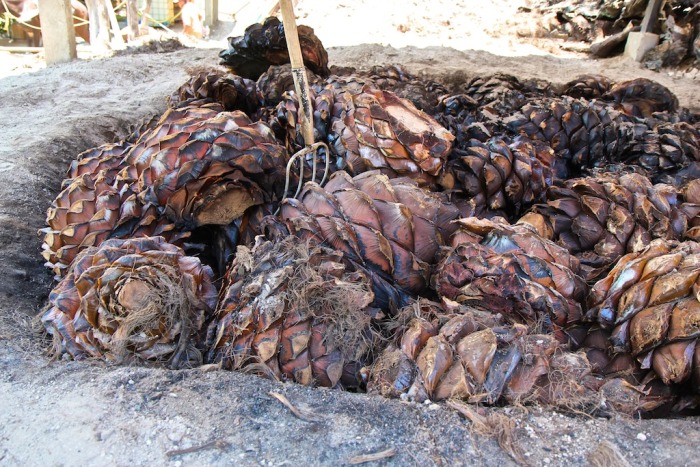
1) The Espadin agave piñas are roasted in an open pit.
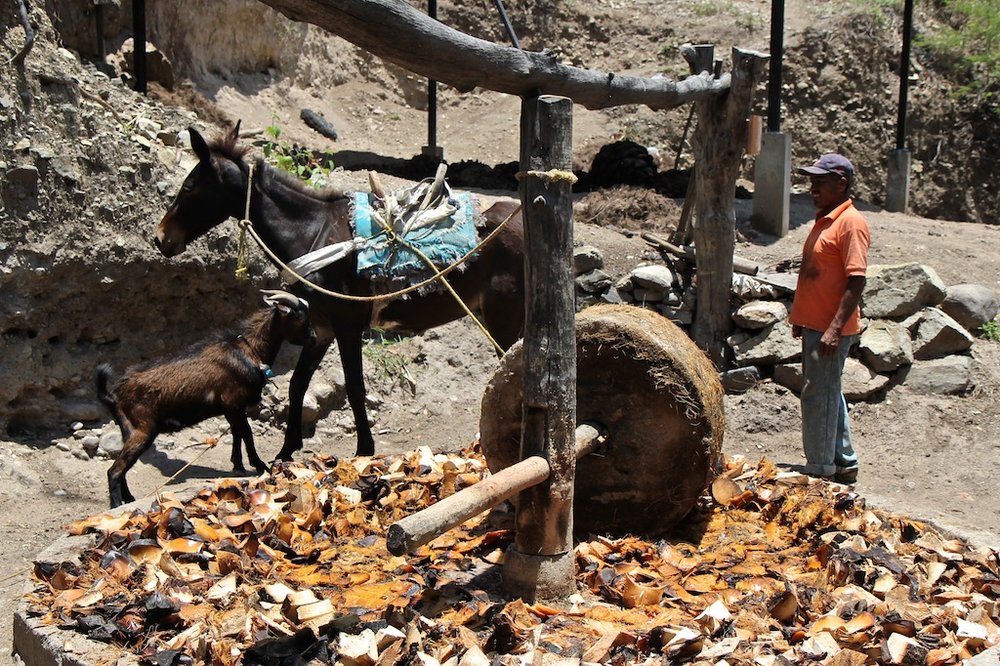
2) Then they're hacked to pieces with a machete and ground into a pulp by a huge stone wheel being pulled by a donkey (in this case a horse being attacked by a crazed goat).
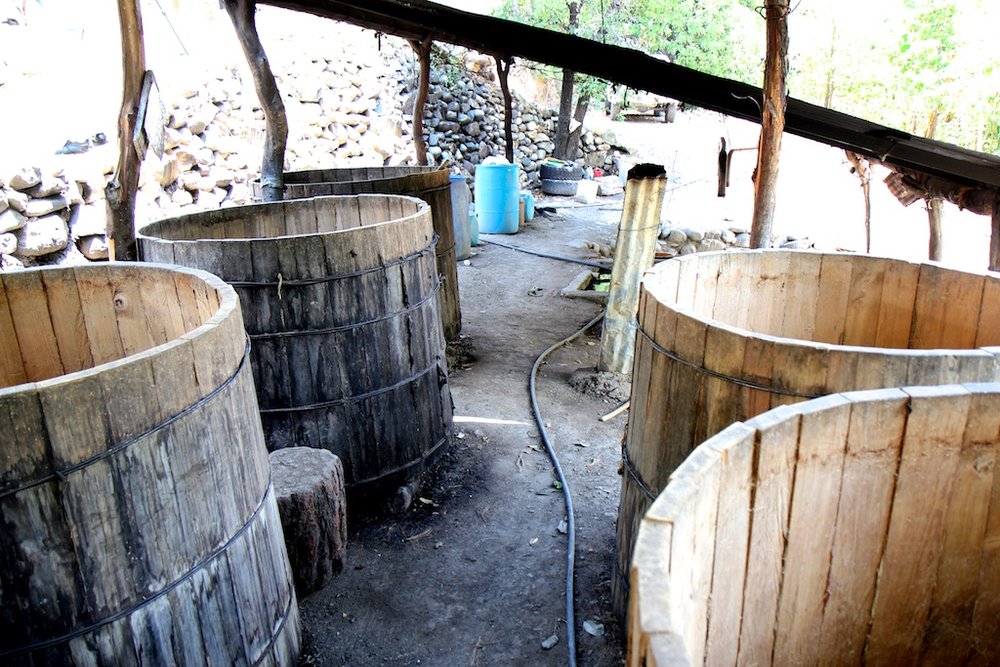
3) Then fermented in wooden washbacks for about eight days (give or take depending on the temperature outside)
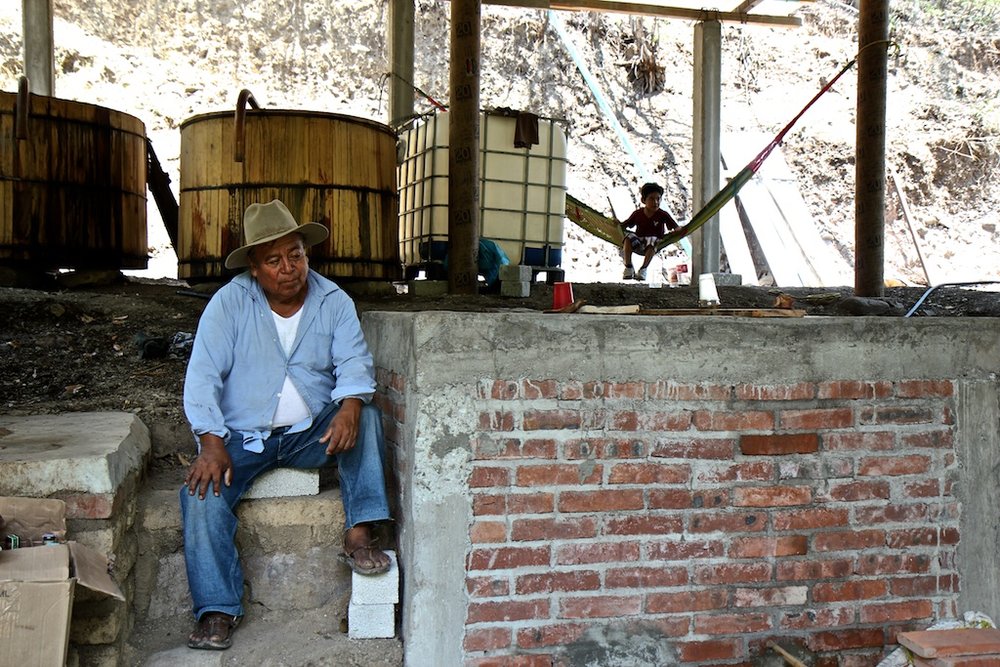
4) Then they're distilled in these brick oven stills by this man: Meleton Contreras.
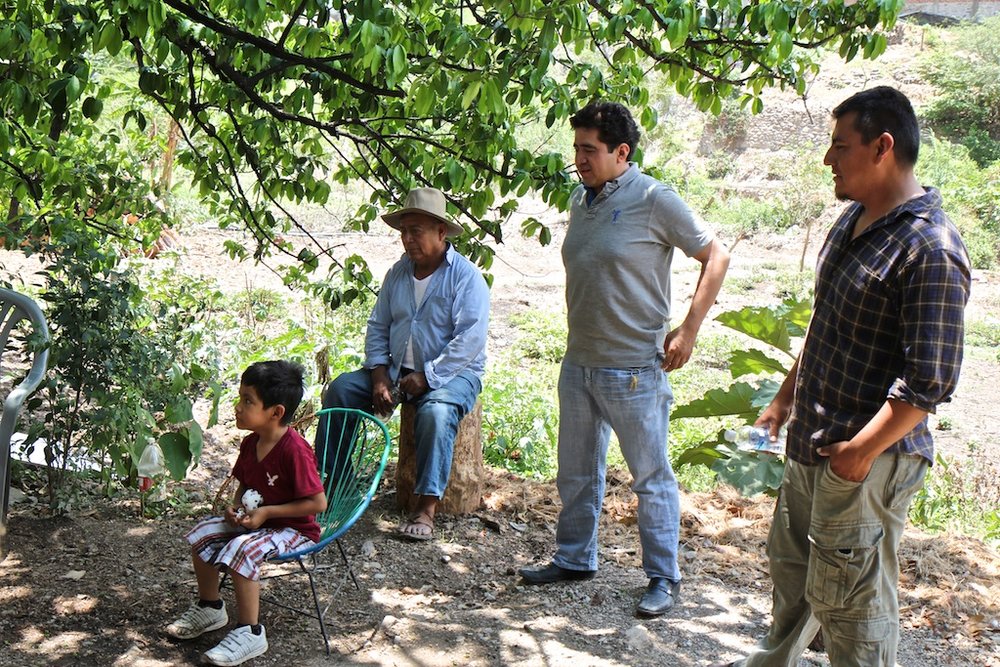
Not alone, of course. He's supported by the rest of his family: his son Lucio, along with cousin Eduardo Hernandez, his sister Minerva, and her husband Enrique (and their kid, little Luis!). The mezcal bottled under the Alipús Santa Ana del Rio label is truly a family affair. I asked Lucio (pictured to the right) what made the agave near Santa Ana so special, and he said the sugar levels. There's always an extreme ripeness to the piñas, he said, which makes fermentation a breeze.
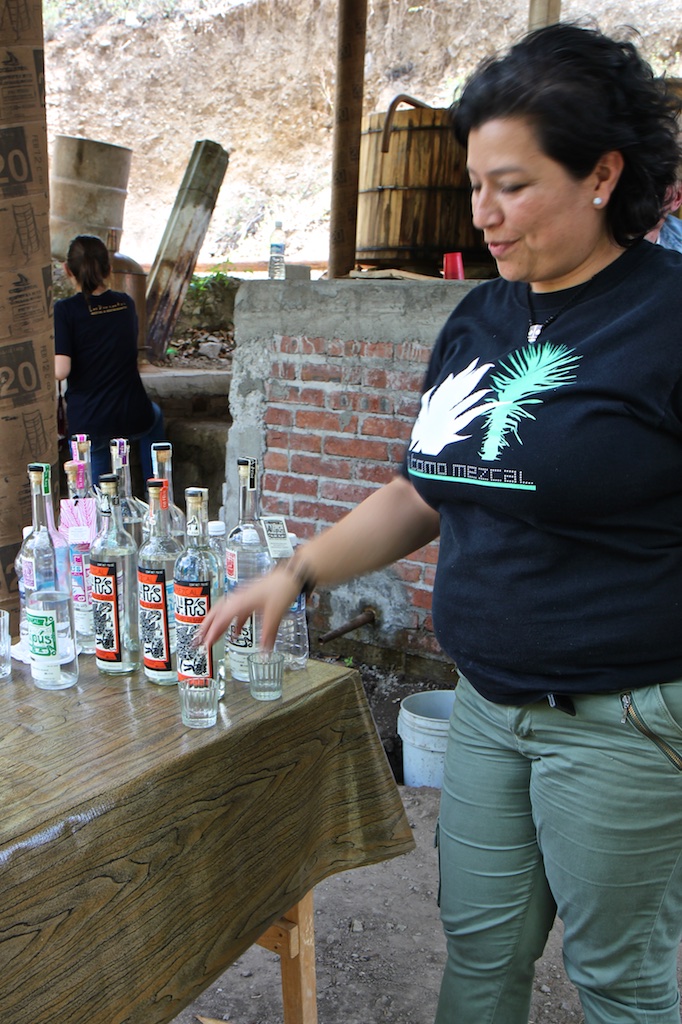
But behind every project of men, there's always an omniscient woman running the show, keeping everyone in line, and letting the boys think they're in charge. Let me introduce you to my new best friend: Karina from the Danzantes group. She is an absolute superstar. No joke. She took the wheel for the entire drive to Santa Ana and not only manned the most ungodly of roads, but also pointed out every species of agave along the way, as well as differentiated between the soil types and how each specific tierra affects the ultimate flavor of the mezcal. I learned more from her about mezcal in three hours (translating her Spanish into English) than I have from anyone else in the last three years. I'll have a lot more to say about her later on. I'm completely smitten with her at the moment.
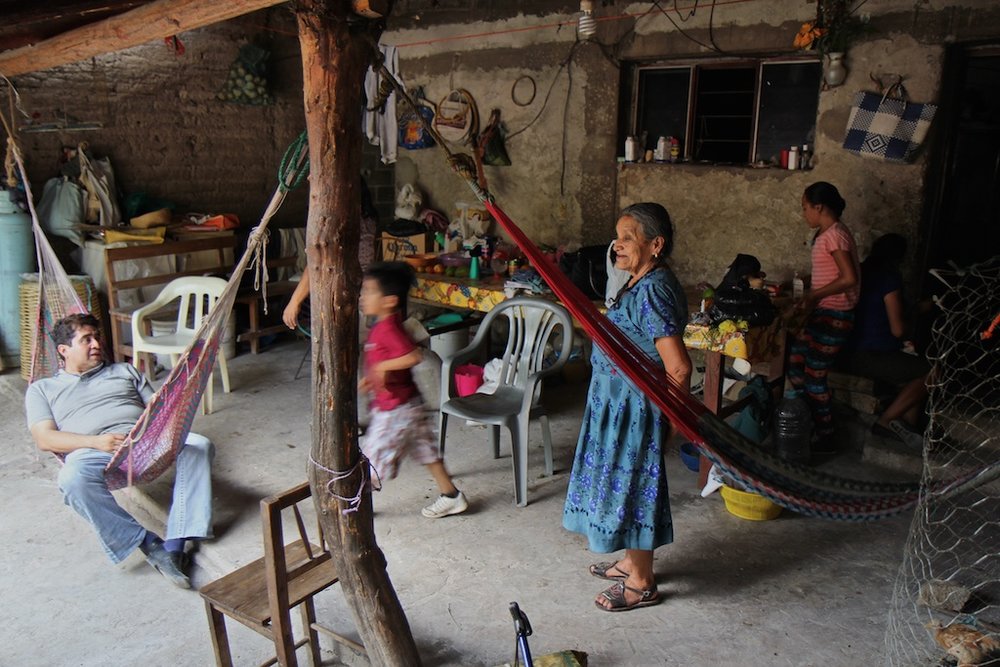
After a long day drinking mezcal at the Santa Ana distillery, it was time to head up towards the village itself and hang out at the family house with la abuela. What a place to take a load off and grab a bite to eat!
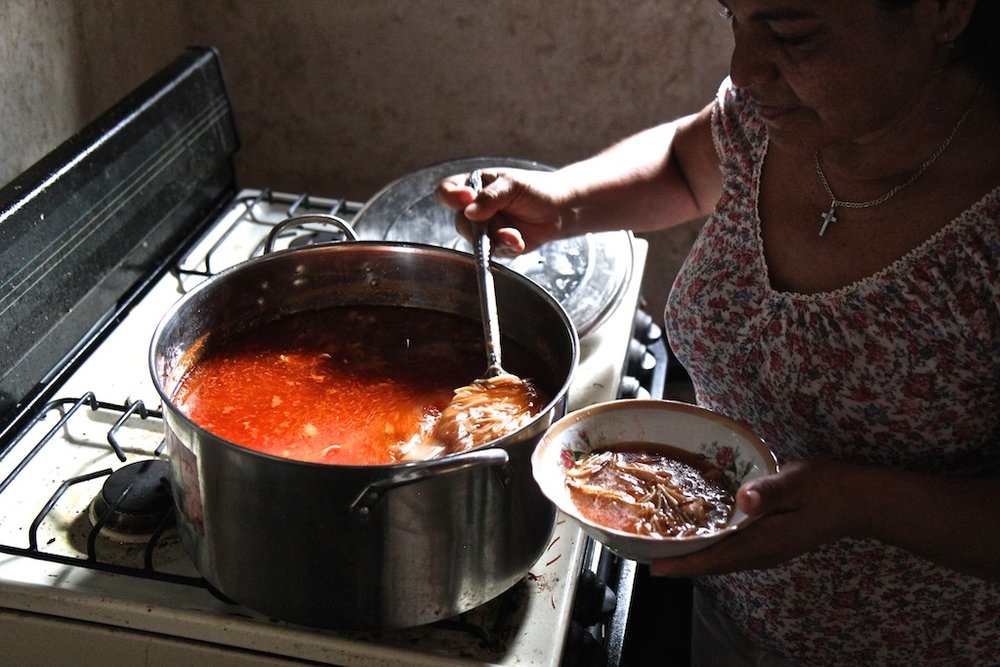
Mmmmm...caldo de pollo, por favor.
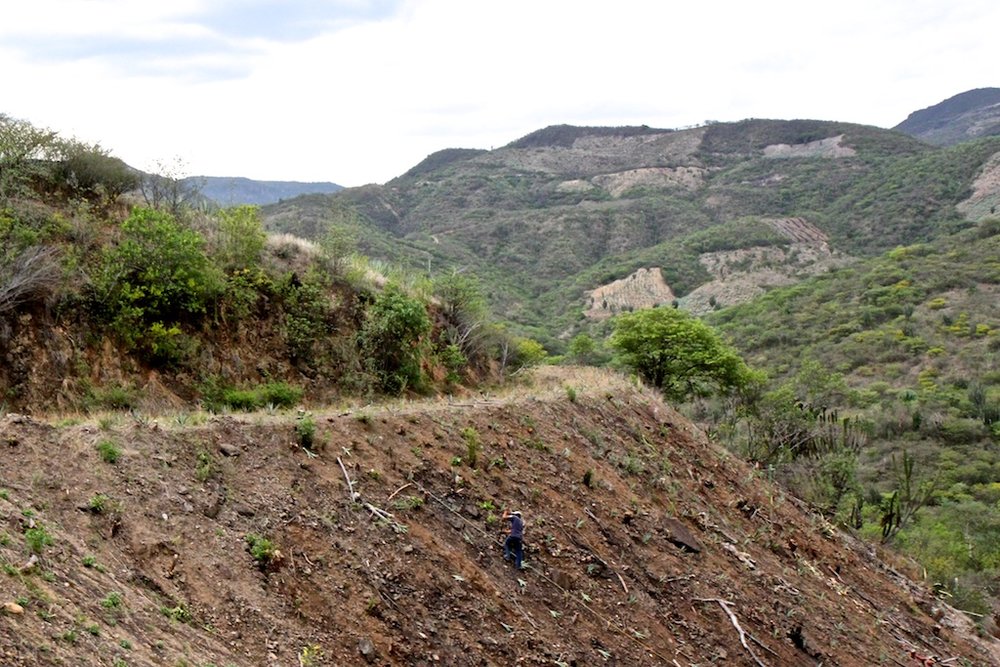
Then it was time for the three hour drive back to Oaxaca City. Check out that lone cortador still harvesting agave on the side of the mountain. He's had an even longer day than I have!
-David Driscoll
